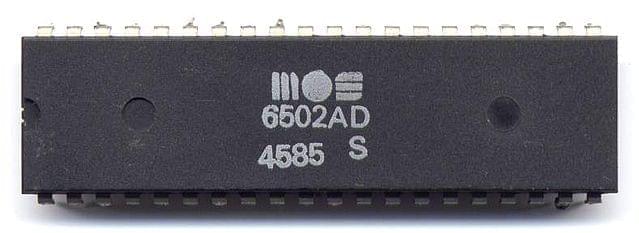To show how computer chips are improving a bit, my first computer, an Apple II+ based on the 6,502 chip, had 7 bytes of memory on the chip. Nvidia’s H100 chip has 85,986,377,728 bytes of memory on it!
The 6,502 was a very successful chip and is still made today, with over 6 billion units sold!
(My home PC has about 283,506,646,208 bytes of memory but that is contained in multiple chips.)
(typically pronounced “sixty-five-oh-two” or “six-five-oh-two”)[3] is an 8-bit microprocessor that was designed by a small team led by Chuck Peddle for MOS Technology. The design team had formerly worked at Motorola on the Motorola 6800 project; the 6,502 is essentially a simplified, less expensive and faster version of that design.
When it was introduced in 1975, the 6,502 was the least expensive microprocessor on the market by a considerable margin. It initially sold for less than one-sixth the cost of competing designs from larger companies, such as the 6,800 or Intel 8080. Its introduction caused rapid decreases in pricing across the entire processor market. Along with the Zilog Z80, it sparked a series of projects that resulted in the home computer revolution of the early 1980s.
Popular video game consoles and home computers of the 1980s and early 1990s, such as the Atari 2600, Atari 8-bit family, Apple II, Nintendo Entertainment System, Commodore 64, Atari Lynx, BBC Micro and others, use the 6,502 or variations of the basic design. Soon after the 6502’s introduction, MOS Technology was purchased outright by Commodore International, who continued to sell the microprocessor and licenses to other manufacturers. In the early days of the 6,502, it was second-sourced by Rockwell and Synertek, and later licensed to other companies.
